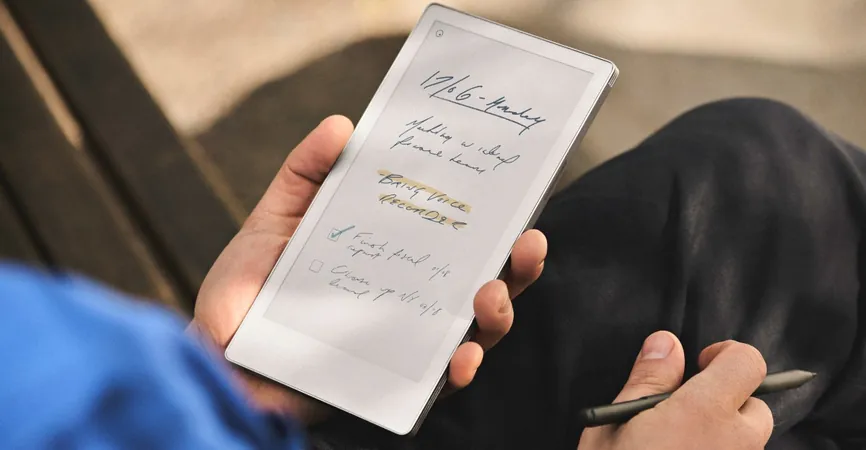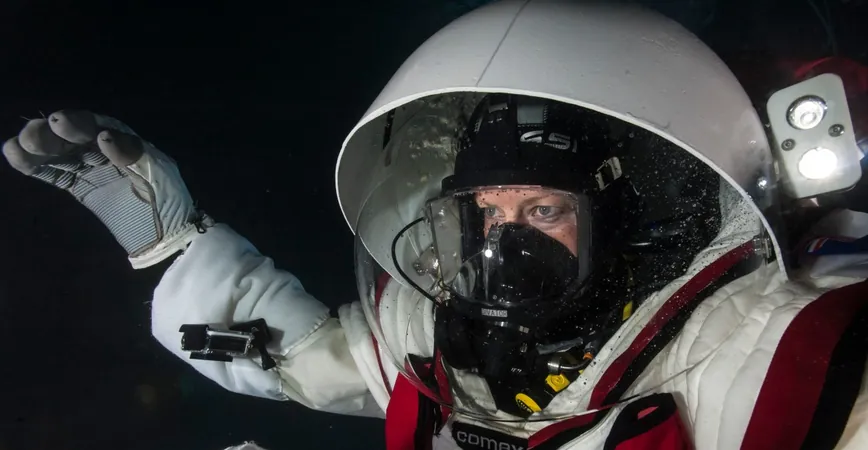
Revolutionizing Cell Tracking: Meet Ultrack and inTRACKtive!
2025-08-25
Author: Charlotte
In a groundbreaking development for embryonic biology, scientists are harnessing cutting-edge technology to capture the mesmerizing journey of cells in real time as they develop into complex organisms. However, there’s a catch: transforming these stunning videos into precise maps of each cell's movement can be exceptionally tricky.
As cells move, divide, and sometimes disappear, tracking their changing locations is crucial not only for understanding embryonic development but also for studying disease progression and treatment responses.
Thanks to innovative minds at the Chan Zuckerberg Biohub in San Francisco, a new cell-tracking platform called Ultrack has been unveiled. This powerful tool is capable of scaling from monitoring a handful of cells in a petri dish to analyzing complete embryos in captivating 3D videos.
Ultrack: The Game-Changer in Cell Tracking
Ultrack has outperformed its competitors in the rigorous Cell Tracking Challenge, proving itself particularly adept at tracking entire embryos. According to Loïc Royer, director of imaging AI at the Biohub, 'Ultrack tackles the toughest challenges, like 3D tracking, swiftly and efficiently while offering practical user-friendly features.'
A Smarter Approach to Tracking
Traditional cell tracking involves a two-step process: segmenting cells in each video frame and then linking them across frames. The biggest hurdle is accurately defining the cell boundaries in densely packed and blurry 3D images. Ultrack takes a revolutionary approach by combining both tasks, segmentation and linking, into one seamless operation.
Instead of identifying each cell individually first, Ultrack constructs an 'ultrametric contour map' each time it scans a frame, evaluating cell boundaries across all frames to determine the most consistent and biologically plausible segments. This innovative method not only reduces computational time but also minimizes tracking errors, allowing researchers to spend less time making corrections.
From Zebrafish to the Virtual Embryo Zoo
The team put Ultrack to the test using zebrafish to track the development of their neuromast organs, achieving stunning accuracy. They also utilized Ultrack to create the Zebrahub, a detailed zebrafish cell atlas.
To further enhance the research experience, Royer's team, in collaboration with the Chan Zuckerberg Initiative, launched inTRACKtive—a user-friendly tool for exploring massive datasets with ease. This browser-based platform allows users to rotate embryos in 3D, analyze cell trajectories, and even manipulate the speed of developmental processes.
Join the Virtual Embryo Zoo!
Moreover, inTRACKtive isn’t just for zebrafish; it includes datasets from multiple species like mice and C. elegans, creating a 'Virtual Embryo Zoo' that researchers can navigate from virtually any device.
As Huijben, one of the lead researchers, points out, 'We encourage contributions to the Virtual Embryo Zoo to enrich this comprehensive repository of embryonic development.' With plans to integrate imaging data with cell tracking results, the potential for even more detailed visualizations and insights could transform the field of developmental biology.









 Brasil (PT)
Brasil (PT)
 Canada (EN)
Canada (EN)
 Chile (ES)
Chile (ES)
 Česko (CS)
Česko (CS)
 대한민국 (KO)
대한민국 (KO)
 España (ES)
España (ES)
 France (FR)
France (FR)
 Hong Kong (EN)
Hong Kong (EN)
 Italia (IT)
Italia (IT)
 日本 (JA)
日本 (JA)
 Magyarország (HU)
Magyarország (HU)
 Norge (NO)
Norge (NO)
 Polska (PL)
Polska (PL)
 Schweiz (DE)
Schweiz (DE)
 Singapore (EN)
Singapore (EN)
 Sverige (SV)
Sverige (SV)
 Suomi (FI)
Suomi (FI)
 Türkiye (TR)
Türkiye (TR)
 الإمارات العربية المتحدة (AR)
الإمارات العربية المتحدة (AR)